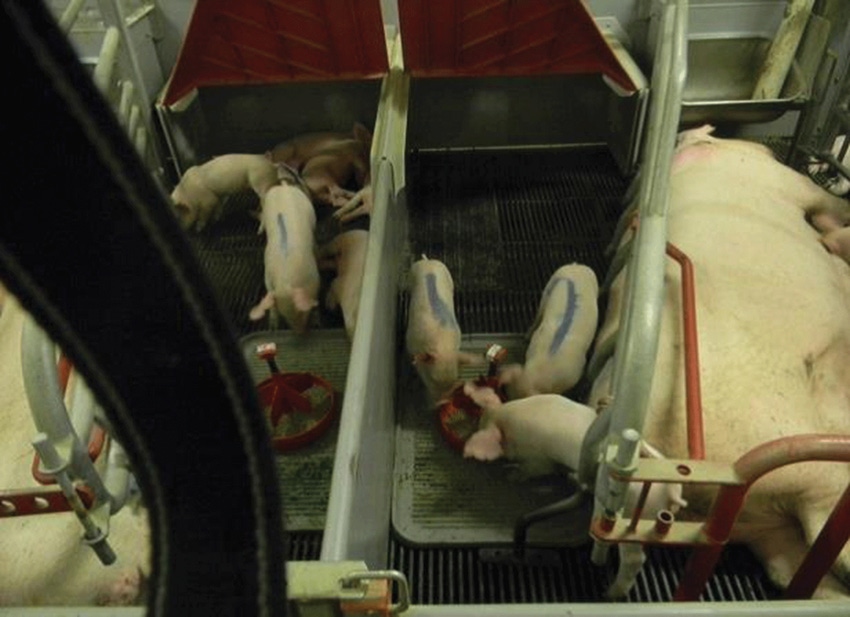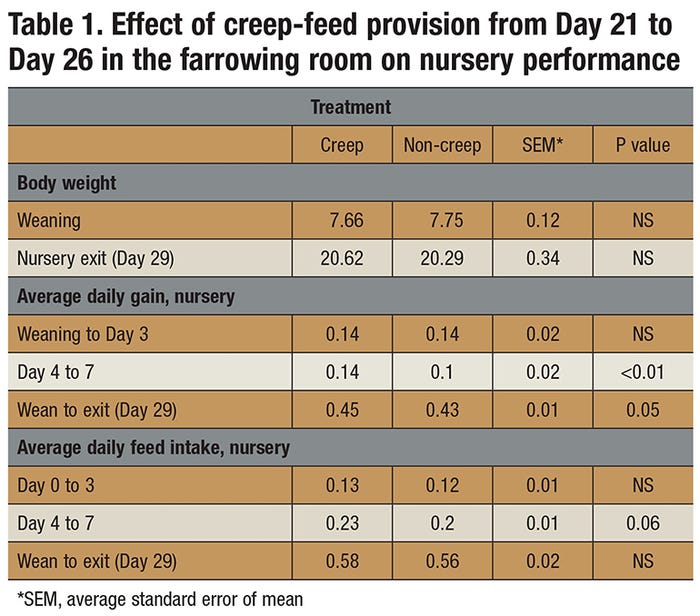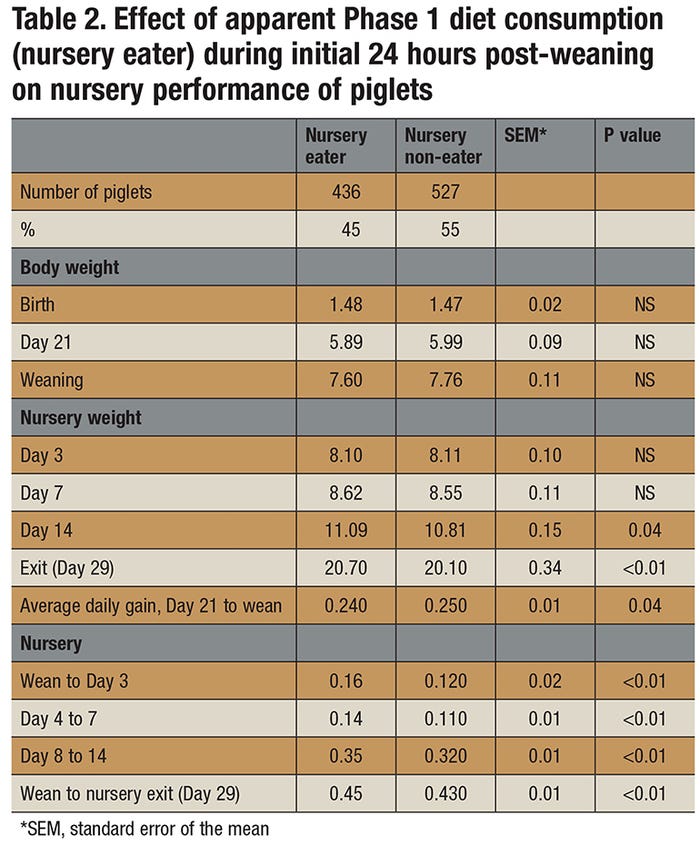In theory, creep feeding should result in heavier piglets at weaning, and since the piglets have been accustomed to solid feed, the post-weaning growth lag should be lessened.
January 4, 2018

Researchers: Atta Agyekum, Prairie Swine Centre; Denise Beaulieu, University of Saskatchewan; Jennifer Brown, Prairie Swine Centre; and Yolande Seddon, University of Saskatchewan
Weaned piglets are subjected to nutritional, social and environmental stressors. They are separated from the sow, moved to a new environment, mixed with non-littermates and expected to begin consuming a novel diet by transitioning from sow’s milk to solid feed.
It is difficult to determine how much each stressor contributes to the growth lag often observed immediately post-weaning. However, post-weaning anorexia, coupled with the immature digestive and immune systems of the newly weaned piglet, increases disease susceptibility and mortality.
Creep feeding — the practice of providing highly palatable and easily digestible feed to nursing piglets to supplement sow’s milk — is a strategy intended to alleviate problems at weaning.
In theory, creep feeding should result in heavier piglets at weaning, and since the piglets have been accustomed to solid feed, the post-weaning growth lag should be lessened.
Nevertheless, research results on creep feeding are inconclusive and confounded by several factors, including litter size and individual variation in creep feed consumption, between and within litters.
As a result, researchers at the Prairie Swine Centre designed an experiment to determine which piglets consume creep feed in the farrowing room and whether the presence of creep feed improves feed intake and body weight gain post-weaning.
A second objective of the research was to determine if piglets consuming creep feed in the farrowing room have improved post-weaning feed intake.
Answers to these questions will provide pork producers with practical information, which could assist with the weaning transition.
Experiment’s design
Researchers designed the experiment to measure, in a commercial-like setting, which piglets in the farrowing room consume creep feed and whether this consumption provided benefits in the nursery.
Nine farrowing groups, totaling 115 sows, were randomly assigned to one of two treatments (creep or no creep) at farrowing. To equalize litter size, cross‐fostering of piglets was conducted within the first 24 hours after birth.
Piglets were weighed at birth and on Day 21 when creep feed (commercial stage 1 starter) was provided for those piglets on that treatment (see Table 1). Piglets were weaned as per normal production practice on Day 26 post-farrowing.

The creep feed and the nursery diets were marked with brilliant blue dye and ferric oxide, respectively. The dye was removed from the creep feed two days before weaning to allow the marker time to exit the body.
Anal swabs were taken from each piglet in the creep-fed groups two days before weaning and from all piglets on Day 2 in the nursery to estimate intake of creep feed in the farrowing room and the nursery diet during the first 24 hours, respectively.
This allowed us to categorize creep-fed piglets into “eaters” and “non‐eaters,” and to determine if this correlated to feed intake in the nursery in the first 24 hours post-weaning.
Creep feeding results
Offering creep feed in the farrowing room for one week before weaning did not improve overall piglet weaning weight or growth rate from Day 21 to weaning. Also, nursery exit weights were similar regardless of creep-feed provision (refer to Table 1). However, average daily gain and average daily feed intake during the nursery phase increased or tended to increase in pigs that had been provided creep feed.
For litters that were provided creep feed, nearly 37% were identified as “eaters” of creep feed. Piglets identified as “non-eaters” were actually heavier on Day 21, when the creep feed was offered and tended to be heavier at weaning. However, “eaters” were heavier at nursery exit due to the increase in ADG of “eaters” in the nursery.
Furthermore, approximately 45% of piglets had apparently consumed some of the Phase 1 diets in the first 24 hours post-weaning, regardless of creep feed provision (Table 2).

This was not affected by birth or weaning weight. It is widely believed that the initial 24 hours post‐weaning is crucial for piglets’ later development.
Indeed, piglets identified as nursery “eaters” had greater ADG throughout the nursery period, resulting in slightly greater nursery exit weights.
50-cent profit per hog
The proportion of piglets with evidence of creep feed consumption at approximately 20 days of age varies across facilities with, on average, 37% of pigs consuming creep. If management could increase consumption of creep feed so that 100% consume creep, producers would see the next benefit of 50 cents per hog.
Overall, the provision of creep feed for five days before weaning did not affect weaning weights or growth rate from Day 21 to weaning. However, modest effects were observed on piglet growth rate in the nursery.
Lighter pigs helped most
Interestingly, within the creep treatment, it was the lighter piglets that took advantage of the creep feed, and this subset of piglets showed an improved growth rate.
Therefore, the provision of creep feed in the farrowing room provides benefits to piglets that show evidence of consumption, and it is the lighter-weight piglets that benefit most from the provision of creep feed, and thus litter variability may be reduced.
For more information, contact Denise Beaulieu.
You May Also Like



